Jharkhand is known for its natural beauty and diverse wildlife. With a varied landscape, the state is home to numerous bird species, ranging from migratory birds to native ones.
The avian population of Jharkhand boasts of fascinating colors, unique behavior, and calls that add significant charm to the region’s fauna.
The state’s dense forests, rolling hills, and meandering rivers and streams offer a suitable habitat for these feathered creatures.
With an abundance of bird species, Jharkhand is more than just a haven for bird watchers- It is a place of awe-inspiring beauty, where these winged wonders thrive and flourish.
This article explores some of the most common and exotic bird species that one can find in Jharkhand.
1. Asian Koel
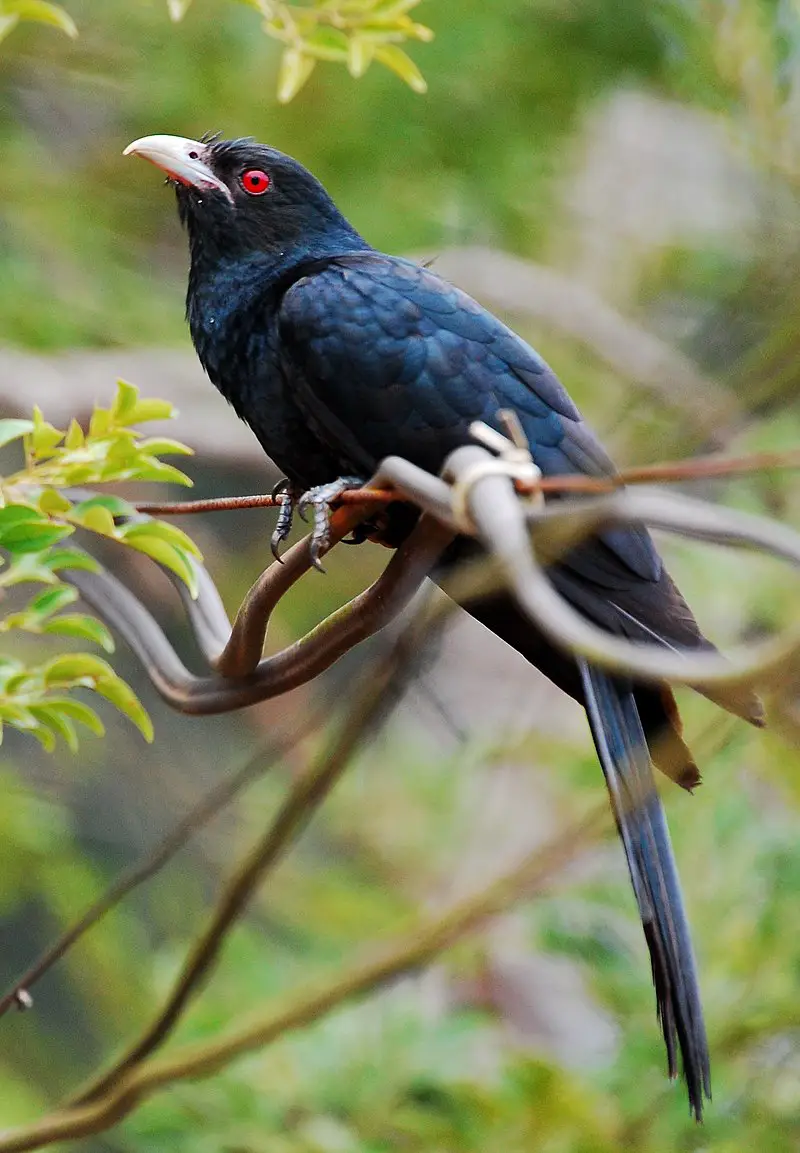
The Asian koel is a member of the Cuculiformes family, found in India, China and Southeast Asia. It shares its range with two closely related species – black-billed koels and Pacific koels.
This bird exhibits brood parasitism; it lays its eggs in nests of other birds, who then unknowingly become foster parents to their young.
Characterised by long tails and glossy feathers that vary from deep blue to greenish-black depending on region, these birds are known for their loud call which can be heard during both day or night time.
They feed mainly on fruits but also take insects when available.
All in all, the Asian Koel is an interesting species that has adapted itself well over many centuries within different ecosystems across Asia.
Scientific classification:
| Kingdom | Animalia |
| Phylum | Chordata |
| Class | Aves |
| Order | Cuculiformes |
| Family | Cuculidae |
| Genus | Eudynamys |
| Species | E. scolopaceus |
Also Featured In: Common Birds in India, Birds of Goa
2. Pied Kingfisher
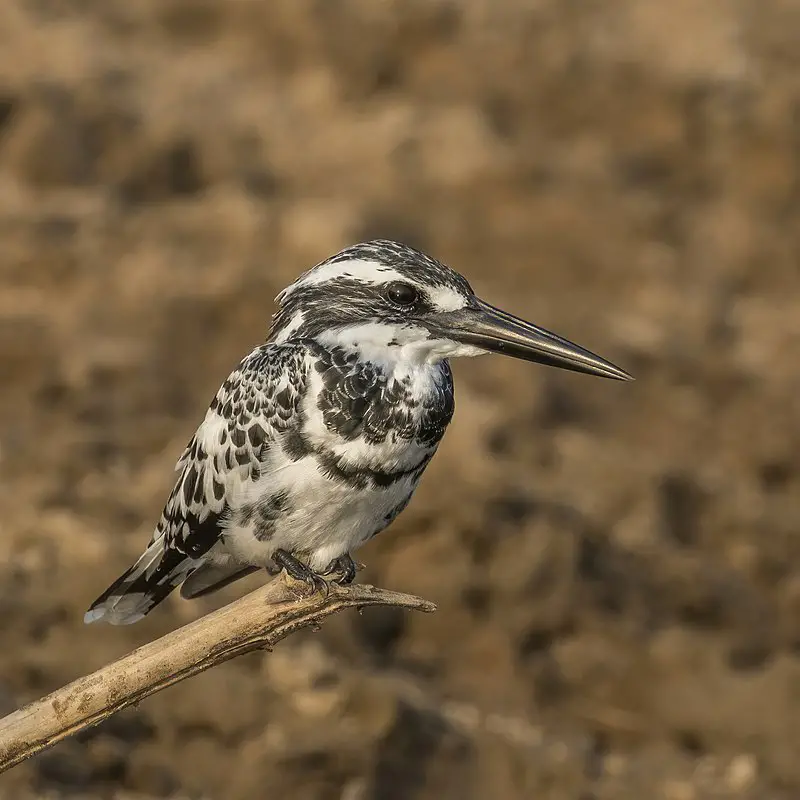
The Pied Kingfisher is a species of water kingfisher found in Africa and Asia. It has black and white plumage, with males sporting a double band across the breast while females have one single band.
This bird makes its presence known by hovering over clear waters before diving for fish – making it easily recognizable.
The diet consists mostly of small aquatic animals such as frogs, crustaceans and insects, but they also consume some plant matter like seeds or fruits occasionally.
The pied kingfisher nests near bodies of water where it can feed off smaller creatures that dwell there; usually in burrows dug into riverbanks or on floating vegetation close to shorelines.
With their distinct colors and behavior patterns these birds make an interesting addition to any wildlife enthusiast’s list.
Scientific classification:
| Kingdom | Animalia |
| Phylum | Chordata |
| Class | Aves |
| Order | Coraciiformes |
| Family | Alcedinidae |
| Subfamily | Cerylinae |
| Genus | Ceryle F. Boie, 1828 |
| Species | C. rudis |
Also Featured In: Native Pakistani Birds, Lebanon Birds Live in Semi-Desert Areas
3. Black-Headed Ibis
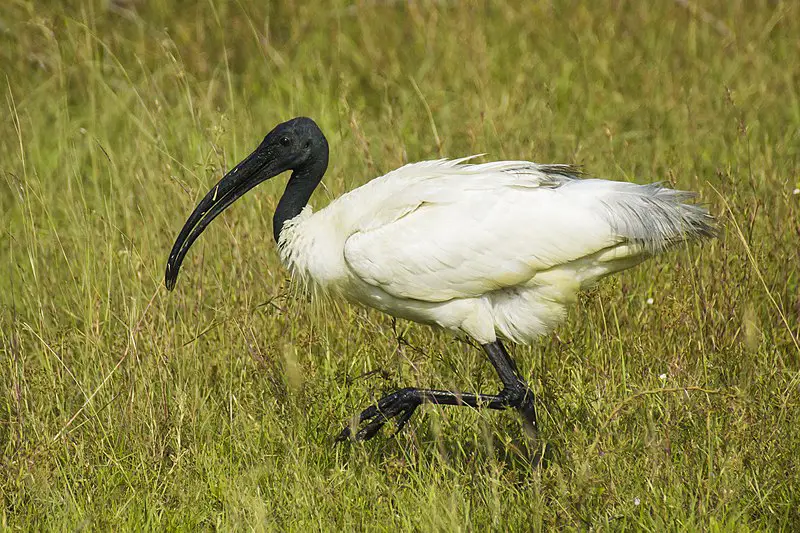
The Black-headed ibis is a majestic wading bird that can be found in areas of South and Southeast Asia, stretching from India to Japan.
It has an overall white plumage, with the most striking feature being its distinctive black neck.
These birds feed mainly on aquatic insects, small fish and frogs which they catch while walking slowly along shallow waters or sweeping their bill through them. They also eat worms, lizards and snails as well as some vegetation such fruits, grains etc..
Despite their wide range across different regions within South/Southeast Asia due to human activities like urbanisation and agricultural expansion.
This species’ population is decreasing at alarming rates making it critically endangered in certain parts of its natural habitat.
Scientific classification:
| Kingdom | Animalia |
| Phylum | Chordata |
| Class | Aves |
| Order | Pelecaniformes |
| Family | Threskiornithidae |
| Genus | Threskiornis |
| Species | T. melanocephalus |
Also Featured In: Birds of Myanmar, Black And White Birds You Don’t Know About
4. Red-Whiskered Bulbul
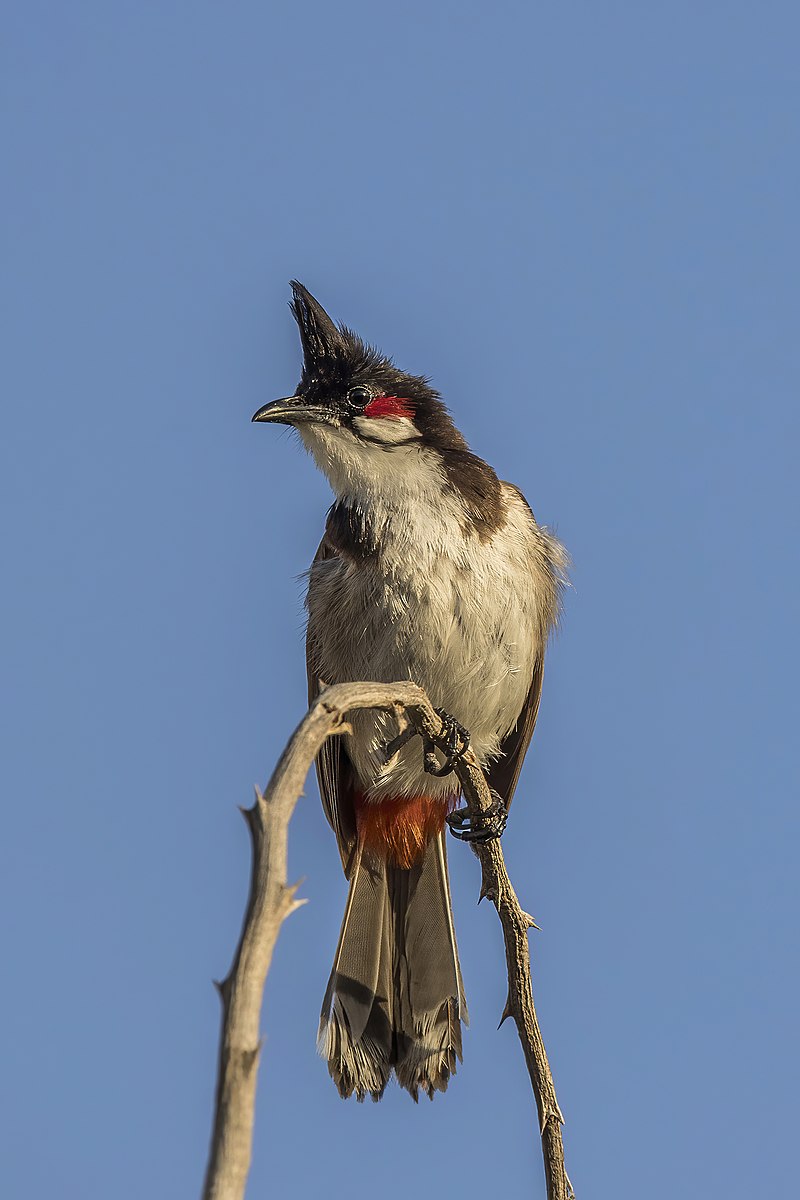
The Red-whiskered Bulbul is a passerine bird native to tropical Asia. It has an unmistakable black head, white cheek patch, and red whiskers on each side of its beak.
This brightly colored bulbul feeds mainly on fruits but also eats small insects from time to time.
The birds are known for their loud call which consists of three or four notes in succession and can often be heard emanating from treetops or other high perches where it likes to sit conspicuously.
Introductions have been made in many parts of the world outside its original range, with populations establishing themselves successfully in various locations including Hawaii and Florida within the United States.
Scientific classification:
| Kingdom | Animalia |
| Phylum | Chordata |
| Class | Aves |
| Order | Passeriformes |
| Family | Pycnonotidae |
| Genus | Pycnonotus |
| Species | P. jocosus |
Also Featured In: Common Birds in Kerala, Common Birds of Mumbai
5. Greater Adjutant
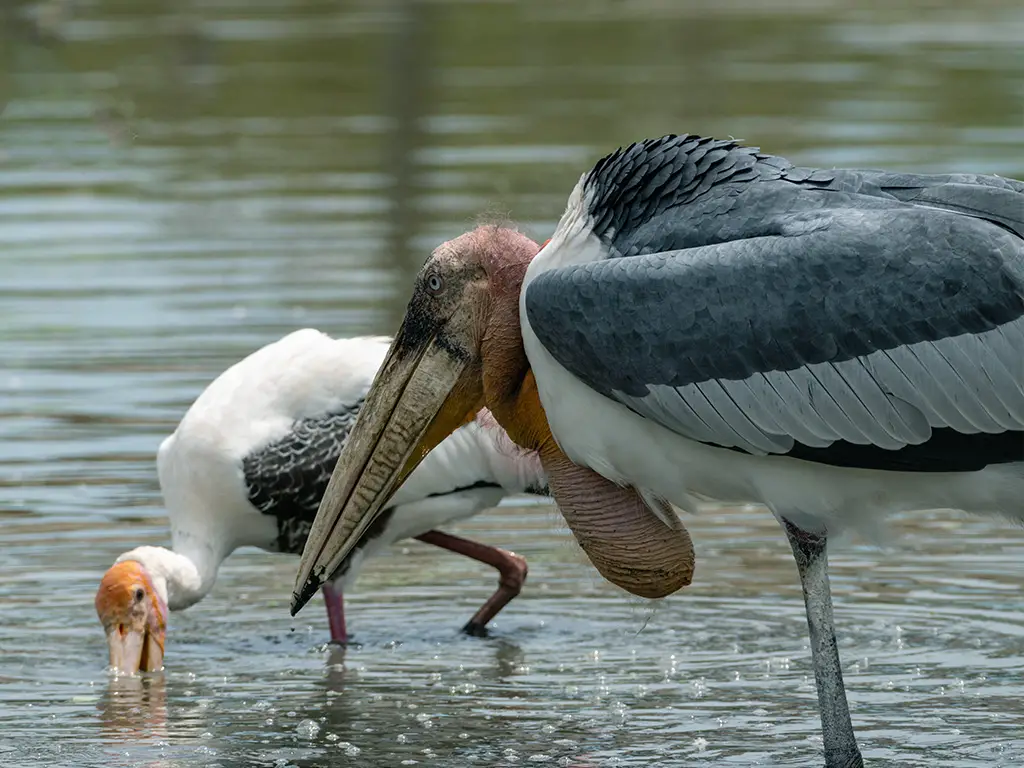
The Greater Adjutant is a majestic member of the stork family, Ciconiidae. It was once found in wide regions across southern and mainland Southeast Asia but now only three breeding populations remain – two in India with the largest colony being located in Assam and another smaller one on an island off Myanmar.
The bird has blackish-grey plumage which stands out against its white shoulder patches giving it a distinctive appearance.
Its large bill gives it an impressive look befitting its size as this species can reach up to 1 metre tall.
Despite their formidable presence, these birds are highly vulnerable due to their small population numbers making them critically endangered.
Conservation efforts such as habitat protection must continue if we are to ensure that future generations will get to admire this beautiful bird for many years yet to come.
Scientific classification:
| Kingdom | Animalia |
| Phylum | Chordata |
| Class | Aves |
| Order | Ciconiiformes |
| Family | Ciconiidae |
| Genus | Leptoptilos |
| Species | L. dubius |
Also Featured In: Most Common Birds of Bihar,
6. Brown-Headed Gull
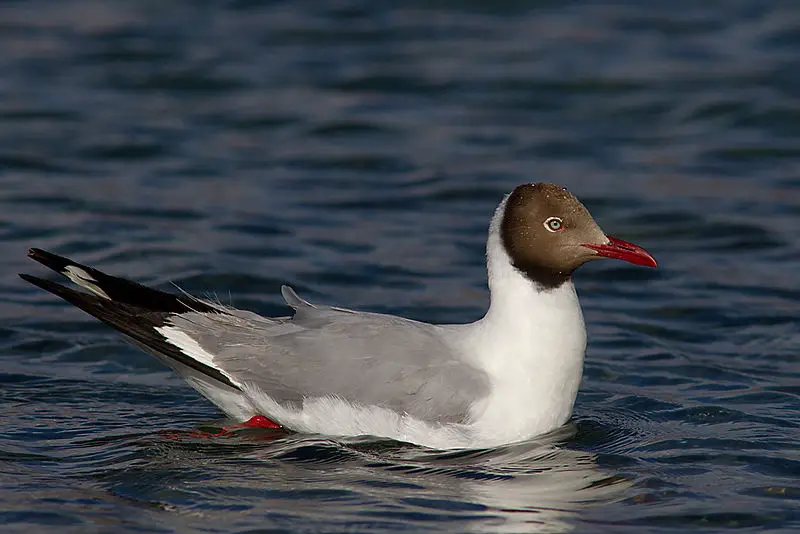
The Brown-headed Gull is a small species of gull that breeds in the high plateaus of Central Asia, from Tajikistan to Inner Mongolia.
During winter it migrates southward and can be seen along coastal areas and large inland lakes throughout the Indian Subcontinent.
They usually breed in colonies within reedbeds or marshes, constructing nests out of sticks on top of trees or among tall vegetation.
These birds have brown heads while their bodies are white with black wing tips; they also feature bright yellow eyes which give them an intense yet endearing look.
Their diet consists mainly fish but they’ll also consume insects, molluscs, crustaceans as well as other invertebrates and even plant matter during seasons when food is scarce.
Despite their shy nature towards humans these amazing birds make for wonderful wildlife watching opportunities.
Scientific classification:
| Kingdom | Animalia |
| Phylum | Chordata |
| Class | Aves |
| Order | Charadriiformes |
| Family | Laridae |
| Genus | Chroicocephalus |
| Species | C. brunnicephalus |
Also Featured In: Most Common Birds in Tajikistan, Birds of Ladakh
7. Wire-Tailed Swallow
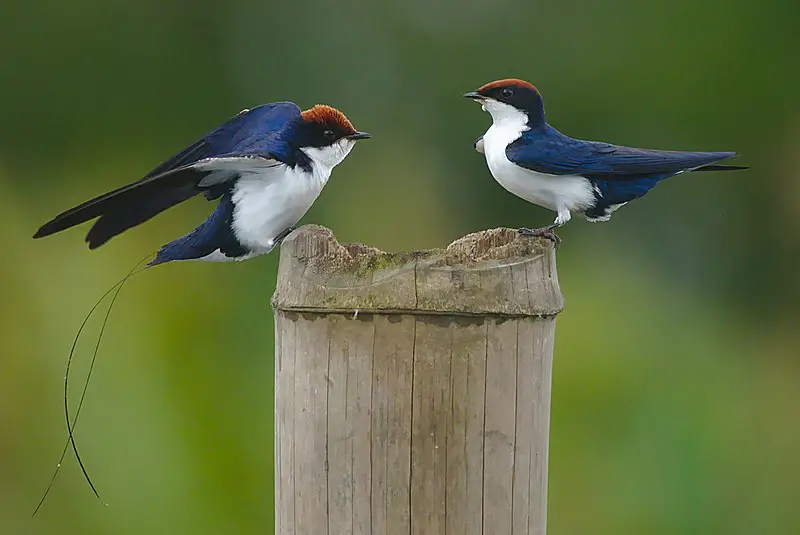
The Wire-tailed Swallow is a small passerine bird from the Hirundo genus and swallow family.
It has two subspecies, one of which can be found in Africa (Hirundo smithii) and the other in Southern and South Eastern Asia (Hirundo filifera).
The species is mainly resident but populations located at Pakistan and Northern India migrate further south during winter season.
These birds are characterized by their brownish back feathers with white spots along with rufous underparts.
Their distinctive feature being long outer tail feathers that extend beyond even their wingspan when seen while they’re flying.
Scientific classification:
| Kingdom | Animalia |
| Phylum | Chordata |
| Class | Aves |
| Order | Passeriformes |
| Family | Hirundinidae |
| Genus | Hirundo |
| Species | H. smithii |
Also Featured In: Swallows Species, Birds that Live in Rajasthan
8. Black-Necked Stork
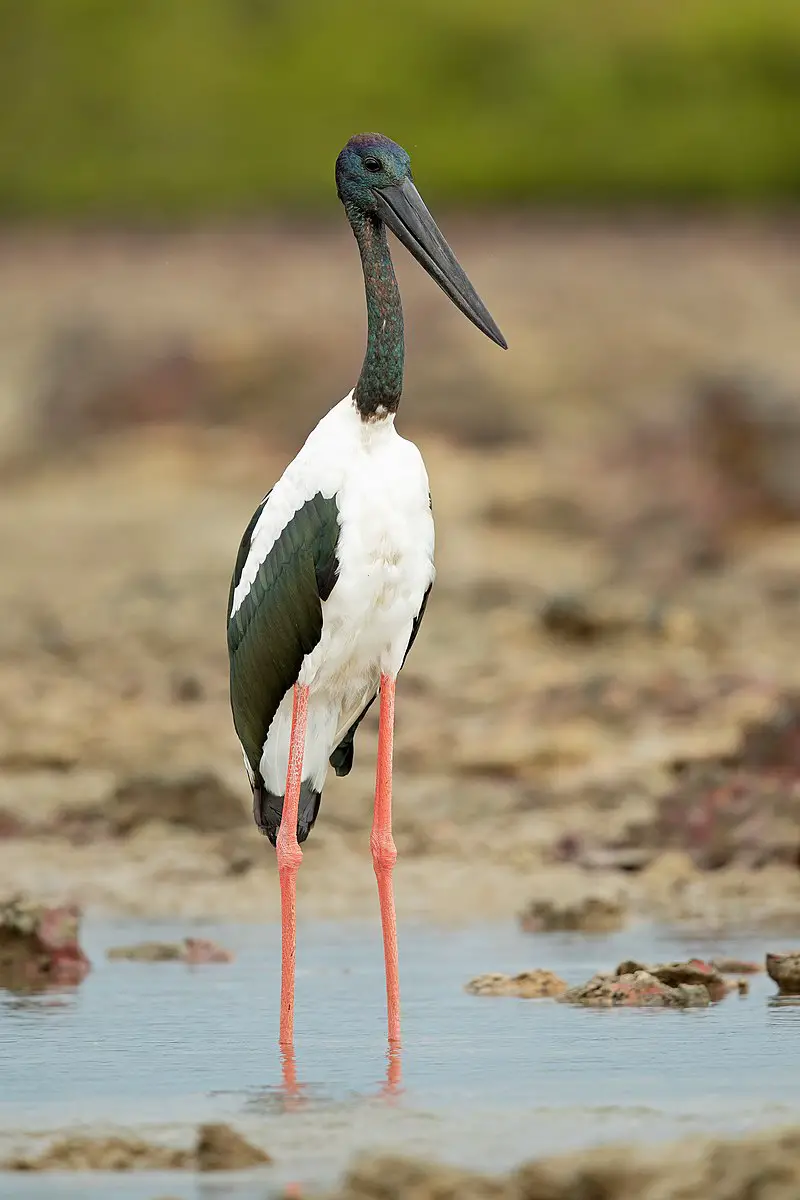
The black-necked stork is a magnificent wading bird in the stork family. With its long neck, striking colours and impressive size, this species is easily recognized across much of India and Southeast Asia as well as Australia.
This adaptable bird can be found in wetlands such as marshes, lagoons and rivers but also frequents nearby crop fields where it feeds on a variety of animal prey including amphibians, fish and small reptiles.
Both sexes have an imposing bill which they use to catch food or perform intricate courtship rituals during breeding season that involve bowing their heads low then jerking them back up again several times.
Their feathers are predominantly dark grey with white patches under the wings while the head has glossy greenish-black plumage; making for stunningly beautiful creatures indeed.
Scientific classification:
| Kingdom | Animalia |
| Phylum | Chordata |
| Class | Aves |
| Order | Ciconiiformes |
| Family | Ciconiidae |
| Genus | Ephippiorhynchus |
| Species | E. asiaticus |
Also Featured In: Stork Species, Birds that Charles Darwin Studied
9. Yellow-Eyed Babbler
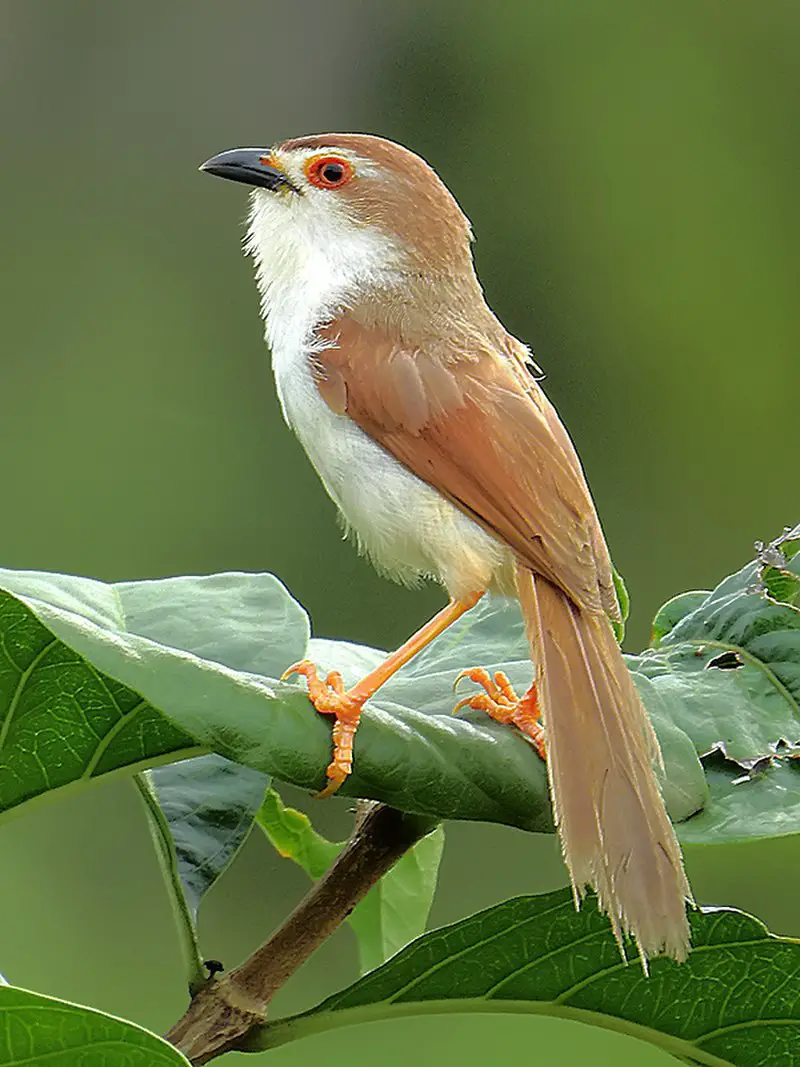
The yellow-eyed babbler is a passerine bird found in South and Southeast Asia. It typically lives in shrubland, grassland, and wetland habitats.
Despite being listed on the IUCN Red List as Least Concern, it is a cherished bird among birdwatchers.
It is known for its distinctive yellow eyes which have earned it its name. Yellow-eyed babblers are part of the Old World babbler family, and their stable population is attributed to their wide distribution.
Overall, the yellow-eyed babbler is a fascinating bird species that can teach us a lot about bird behavior and ecology.
Scientific classification:
| Kingdom | Animalia |
| Phylum | Chordata |
| Class | Aves |
| Order | Passeriformes |
| Family | Paradoxornithidae |
| Genus | Chrysomma |
| Species | C. sinense |
Also Featured In: Gujarati Birds, Delhi Birds You Need to See
10. Citrine Wagtail
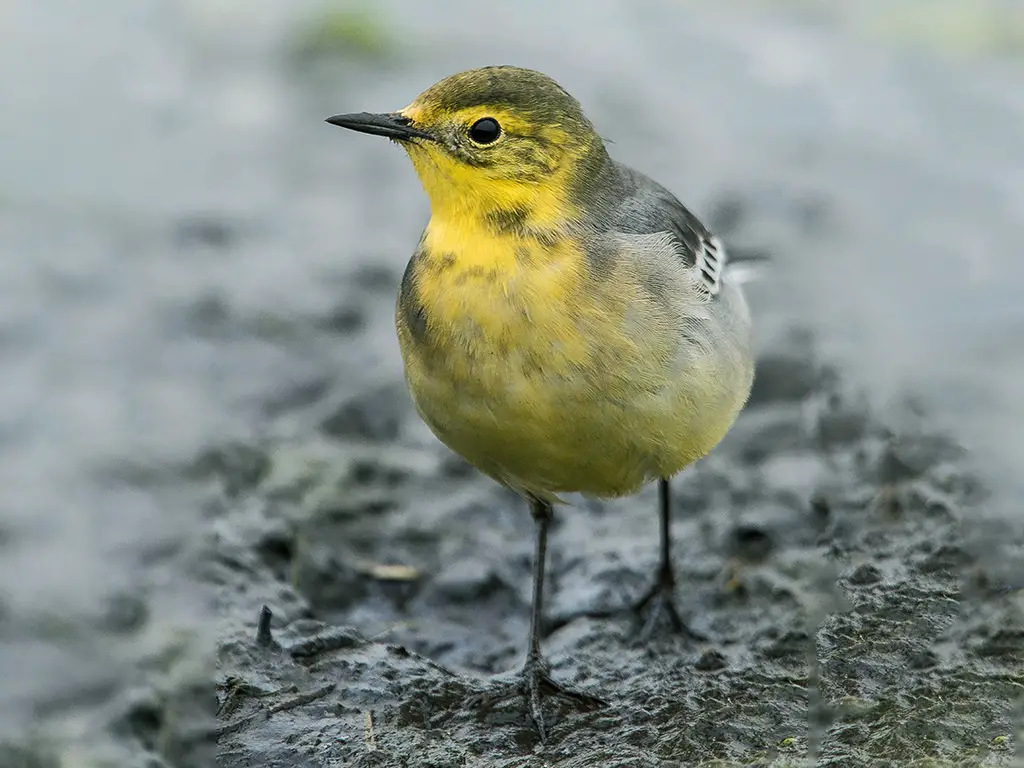
The citrine wagtail is a petite songbird that belongs to the Motacillidae family. Its yellowish hue, as denoted by its name, adds flashes of brightness to its appearance.
In the early 21st century, there has been much discussion surrounding its systematics, taxonomy, and phylogeny as it forms a cryptic species complex with the eastern and western yellow wagtail.
Scientific classification:
| Kingdom | Animalia |
| Phylum | Chordata |
| Class | Aves |
| Order | Passeriformes |
| Family | Motacillidae |
| Genus | Motacilla |
| Species | M. citreola |
Also Featured In: Armenian Birds You Should Know, Most Common Lithuanian Birds
11. Scarlet Minivet
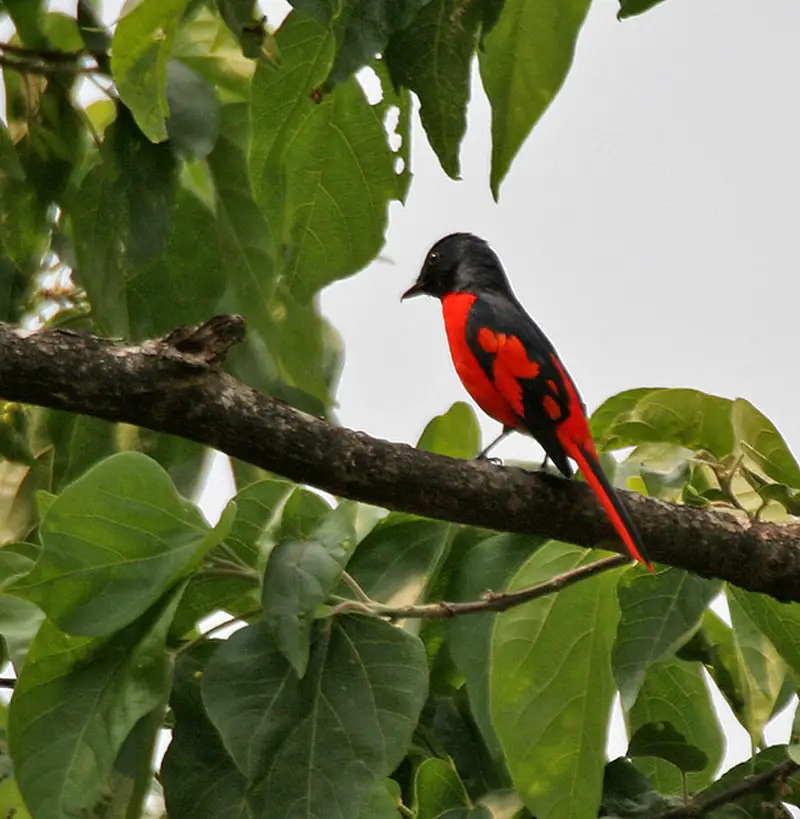
The Scarlet Minivet is a tiny bird species that is commonly found in tropical regions of southern Asia. It is a resident breeding bird and prefers well-wooded habitats like forests and gardens.
The male species has a bright orange or scarlet color with a black upper part. It is a common sight in hilly regions of Northeast India to southern China, Indonesia, and the Philippines.
The bright color of the male makes it easy to identify this species when compared to the female, whose coloring is not as vibrant.
Scarlet Minivets can often be heard singing their melodious songs in the forests, making them a favorite among birdwatchers.
Scientific classification:
| Kingdom | Animalia |
| Phylum | Chordata |
| Class | Aves |
| Order | Passeriformes |
| Family | Campephagidae |
| Genus | Pericrocotus |
| Species | P. speciosus |
Also Featured In: Hong Kong Birds You Need to See, Common Birds that Live in Odisha
12. Red-Naped Ibis
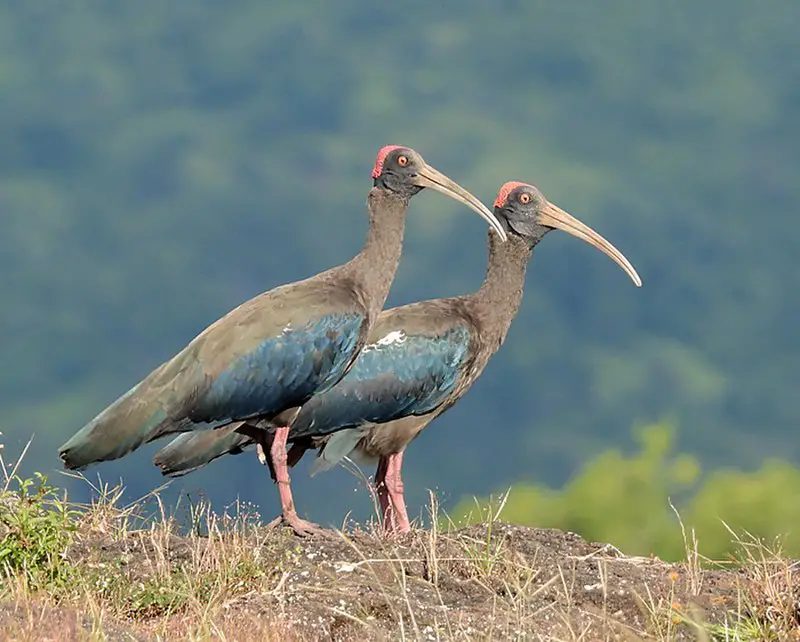
The Red-naped ibis, also known as the Indian black ibis or black ibis, is a species of bird found in the plains of the Indian Subcontinent.
This ibis is unique as it does not heavily rely on water and is often seen in dry fields far away from water bodies.
It is typically found in loose groups and is easily identifiable by its dark body with a white patch on the neck.
The Red-naped ibis, unlike other ibises in the region, can adapt to different environments and feed on a variety of prey. They are known to feed on insects, small reptiles, and even small birds.
This bird species plays an important role in controlling insect populations and is integral to its ecosystem.
Population numbers for the Red-naped ibis remain stable, making it a common sight for bird enthusiasts in the Indian Subcontinent.
Scientific classification:
| Kingdom | Animalia |
| Phylum | Chordata |
| Class | Aves |
| Order | Pelecaniformes |
| Family | Threskiornithidae |
| Genus | Pseudibis |
| Species | P. papillosa |
Also Featured In: Birds of Karnataka, Birds You’ll Find in Kanha National Park
13. Tickell’s Blue Flycatcher
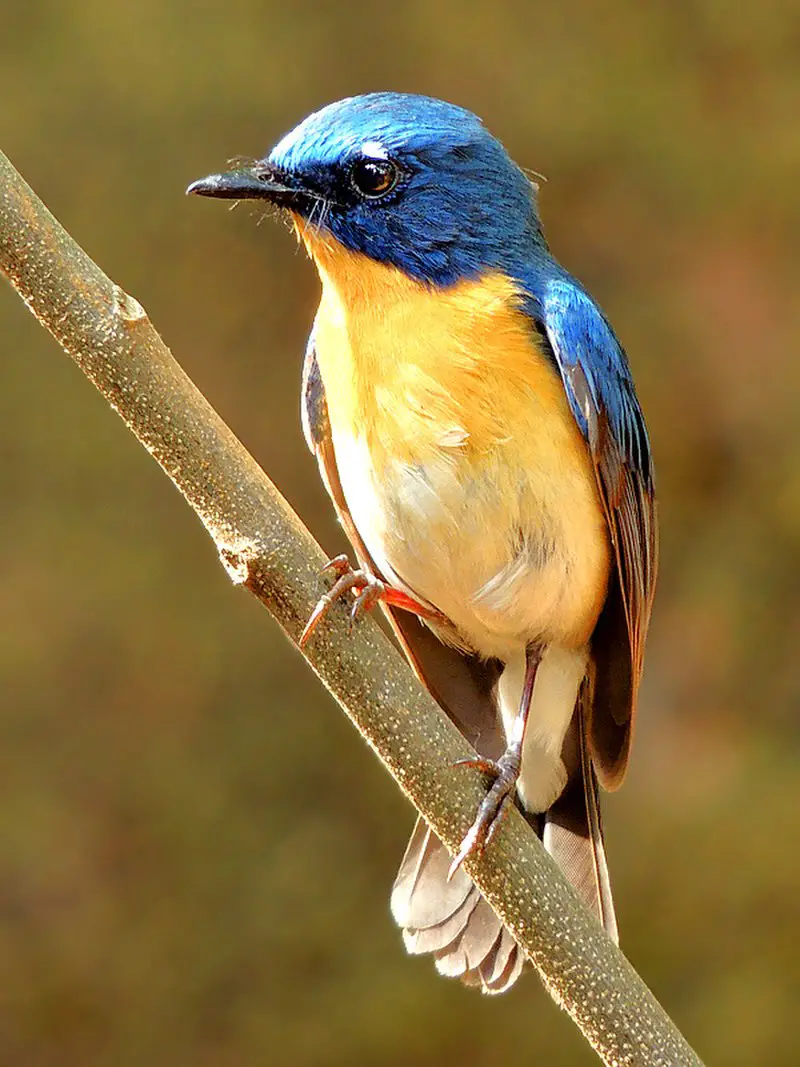
Tickell’s blue flycatcher is a small insectivorous bird that belongs to the flycatcher family. It can be found in tropical Asia, from western Myanmar to the Indian subcontinent and Bangladesh.
The upperparts are blue while the throat and breast have a rufous color. This bird feeds mainly on insects and prefers to dwell in dense areas.
It is a unique species and was once considered as a conspecific of the Indochinese blue flycatcher.
Tickell’s blue flycatcher offers a beautiful sight with its blue and rufous coloration. It can be a challenge to spot them in their natural habitat as they tend to camouflage well in their surroundings.
Overall, this little bird is a charming creature that adds color and grace to the biodiversity of the region.
Scientific classification:
| Kingdom | Animalia |
| Phylum | Chordata |
| Class | Aves |
| Order | Passeriformes |
| Family | Muscicapidae |
| Genus | Cyornis |
| Species | C. tickelliae |
Also Featured In: Common Birds in Bangalore,
14. Ashy-Crowned Sparrow-Lark

The Ashy-crowned sparrow-lark is a small bird that belongs to the lark family. It is commonly found in open lands across South Asia where there is bare ground, grass, and scrub.
During the breeding season, males are easily recognizable by their distinct black-and-white face pattern, while females have a sandy brown color that resembles a female sparrow.
Despite their small size, these birds are very active and can be seen flying and hopping around frequently.
They are known for their beautiful singing voice, which is often heard during the mating season.
The Ashy-crowned sparrow-lark is an important part of the natural ecosystem and plays a crucial role in maintaining the balance of the food chain.
Scientific classification:
| Kingdom | Animalia |
| Phylum | Chordata |
| Class | Aves |
| Order | Passeriformes |
| Family | Alaudidae |
| Genus | Eremopterix |
| Species | E. griseus |
Also Featured In: Most Common Madhya Pradesh Birds, Common Birds of Chhattisgarh
15. Verditer Flycatcher
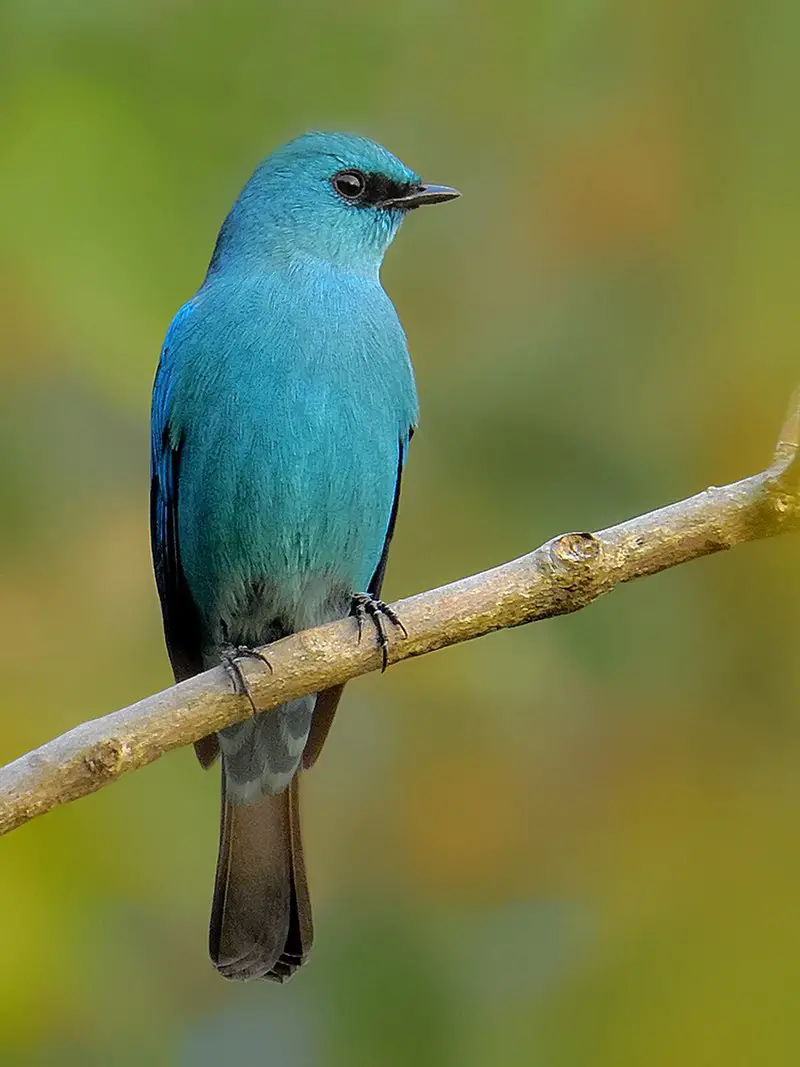
The verditer flycatcher is a beautiful bird found in the Himalayas to Sumatra. Known for its unique shade of blue, it has a dark patch above its bill base and between its eyes.
Adult males have an intense blue color all over their body except for the black eye-patch and grey vent.
Females, on the other hand, have a slightly different appearance. Their body is a mixture of light blue and green colors, and they also have a dark patch above their bill base.
These birds feed on insects, and they are often found in dense forests, gardens, and fruit orchards. They are known for their beautiful songs, which can be heard throughout their habitat.
Overall, the verditer flycatcher is a beautiful and fascinating bird that adds color and music to the natural world.
Scientific classification:
| Kingdom | Animalia |
| Phylum | Chordata |
| Class | Aves |
| Order | Passeriformes |
| Family | Muscicapidae |
| Genus | Eumyias |
| Species | E. thalassinus |
Also Featured In: Birds that You’ll Find in Kolkata,
16. Blyth’s Pipit
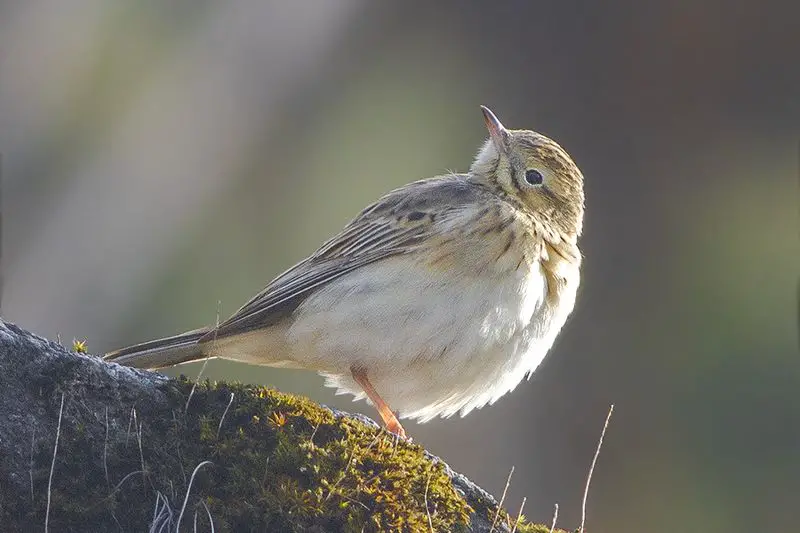
Blyth’s pipit is a medium-sized bird that breeds in Mongolia and neighbouring areas of China, Tibet and India. It is a long distance migrant that travels to open lowlands in Southern Asia.
Despite being a large pipit, the bird is undistinguished on the ground, mainly brown above and pale below.
It is often mistaken for the Richard’s pipit due to its similar appearance. The Blyth’s pipit is a very rare vagrant to western Europe.
As a passerine bird, it feeds on insects and seeds. Its breeding habitat includes open grassy areas, meadows and steppes.
During migration, it is often seen in rice fields and other agricultural areas. With a relatively small population and declining habitat, the conservation status of Blyth’s pipit is considered to be near threatened.
Scientific classification:
| Kingdom | Animalia |
| Phylum | Chordata |
| Class | Aves |
| Order | Passeriformes |
| Family | Motacillidae |
| Genus | Anthus |
| Species | A. godlewskii |
17. Tricoloured Munia
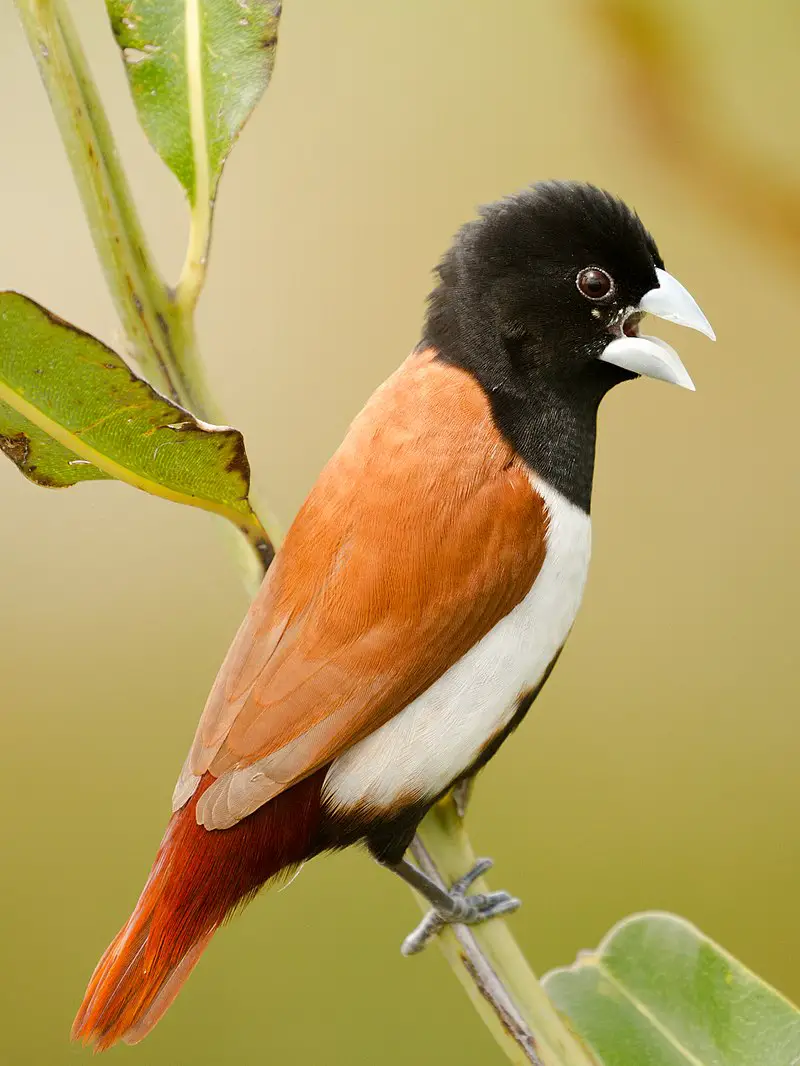
The Tricoloured munia bird is a type of finch that can be found in various countries such as Bangladesh, India, Sri Lanka, Pakistan, and China. It is sometimes called the black-headed munia, just like the chestnut munia.
The bird has also been introduced to some areas in the Caribbean, including Trinidad, Jamaica, Hispaniola, Puerto Rico, Cuba, and Venezuela.
Juvenile tricoloured munias have light brown upperparts and do not have the same dark head as adults.
This bird is known for its striking coloration, which includes black, white, and chestnut tones. It is a popular species among bird enthusiasts due to its distinctive appearance and charming personality.
Scientific classification:
| Kingdom | Animalia |
| Phylum | Chordata |
| Class | Aves |
| Order | Passeriformes |
| Family | Estrildidae |
| Genus | Lonchura |
| Species | L. malacca |
Conclusion
Jharkhand, a state rich in natural diversity, is home to 17 common bird species, contributing to its ecological vibrancy and cultural significance.
From the melodious Indian Peafowl to the majestic Black Kite, these avian inhabitants reflect the diverse habitats and ecosystems throughout the region, including forests, wetlands, and grasslands.
As integral components of Jharkhand’s biodiversity, these birds play vital roles in seed dispersal, insect control, and pollination.
To ensure their continued presence and conservation, concerted efforts are needed to protect their habitats, mitigate habitat loss and pollution threats, and promote community-based conservation initiatives.
We uphold the state’s natural legacy for generations by valuing and safeguarding Jharkhand’s avian heritage.